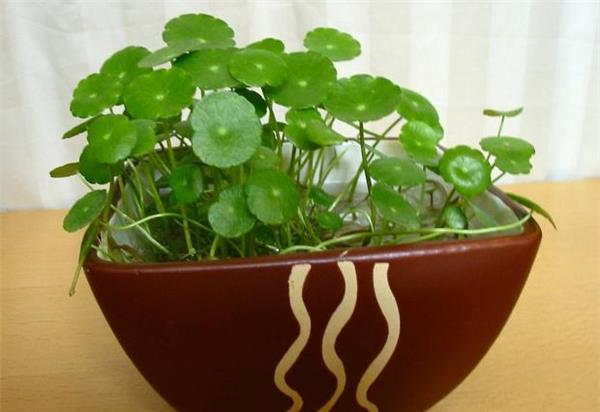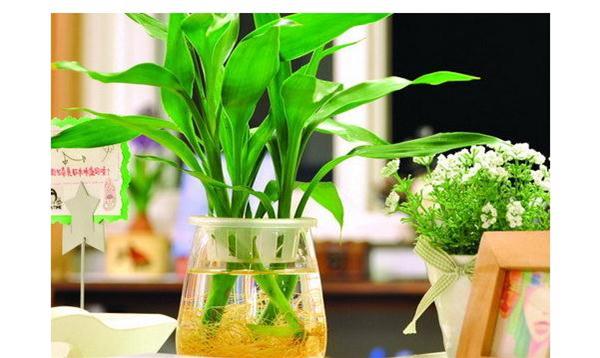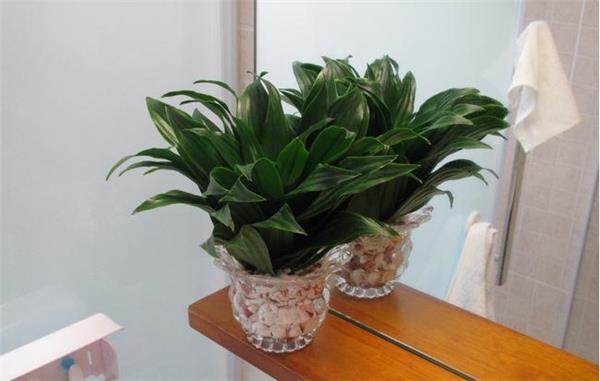An inventory of aquatic ornamental plants
Indoor aquatic ornamental plants are specially cultivated indoors for ornamental plants, so what are indoor aquatic ornamental plants? Perhaps some friends do not have a special understanding of this. Today, I will give you a brief introduction. Let's learn about it together.

Species of aquatic plants
Aquatic plants generally refer to plants that can grow normally in water or water-saturated soil for a long time, such as water lilies, Manjianghong, rice and so on. If it is divided according to the distribution in the water, it can be subdivided into three categories: effluent plants, submerged plants and floating plants. Such as lotus, stone sunflower, lotus and so on. There are many kinds of aquatic plants. According to the life style of aquatic plants, they are generally divided into four categories: floating plants, floating plants, submerged plants and aquatic plants.
The main characteristics of floating leaf plants are well-developed rhizomes, large flowers and colorful flowers, and most of them are leaves floating in sleep. The common ones are: Wang lotus, water lily, Pingpeng grass, Euryale seed, salmon and so on, which are generally not suitable for indoor aquatic plant culture.
The main characteristics of water-standing plants are tall plants, beautiful flowers, and a wide variety of species, such as lotus, Qianqu vegetable, calamus, yellow calamus, water onion, spring onion, barracuda, barracuda, Phyllostachys pubescens, cattail, alisma, parasol, Reed and so on.

What are the indoor aquatic ornamental plants
1. Evergreen
Many people do not know that evergreen is also a kind of aquatic ornamental plant. Plants of the family Liliaceae, having thick leathery basal leaves, oblanceolate, broadly lanceolate or broad-frequency, terminal fleshy inflorescences long-elliptic, dense flowers, sessile, yellowish, hemispherical. Rich in varieties, there are green leaves, flowers and leaves and other types, is a strong adaptation to ornamental flower varieties, usually pot ornamental, in recent years, more and more water-raised varieties, not only strong ornamental, but also can effectively clean indoor air pollution.
2. Rich bamboo
How can indoor aquatic ornamental plants lack hydroponic rich bamboo, which is an evergreen erect shrub of Liliaceae, which is suitable for indoor hydroponic flowers. In hydroponic culture, the stem of Fugui bamboo was cut into small segments of more than 20 cm as cuttings in water, and as long as the cuttings were soaked in water, they could take root and survive.
3. Hyacinth
There are many indoor aquatic ornamental plants, hyacinth is also one of them, hyacinth, also known as daffodil, belongs to the hyacinth genus of Liliaceae, perennial herbs. The bulb is spherical or oblate, and the outer coat flag is purplish blue or white. Flower stem extracted from the middle of the leaf stem, raceme, flower appearance delicate, colorful, dazzling, pleasant fragrance. Sex likes a sunny and cool and humid environment, and it is suitable for pot cultivation. If you want to grow in water, put the bulb in the hydroponic nutrient solution.

Culture methods of Aquatic ornamental plants
How to raise aquatic plants? Aquatic plants should be planted according to the habits of different species or varieties. In garden construction, there are two different technical ways to plant aquatic plants. One is to build a planting trough at the bottom of the pond, laying with at least 15 centimeters of thick soil to implant the aquatic plants into the soil, and the other is to put the aquatic plant species in the container and then sink the container into the water.
The two methods described above have their own advantages and disadvantages. The method of planting aquatic plants in containers and then sinking into the water is more common because it is easy to move. For example, in winter in the north, containers have to be taken out and collected to prevent severe cold. In spring, when changing soil, fertilizing and dividing plants, the operation is more flexible and labor-saving. Moreover, this method can keep the water of the pool clear, and it is more convenient to clean the bottom and change the water.

This is the end of the introduction of aquatic ornamental plants. I believe that after reading it, we will have a certain understanding of aquatic ornamental plants. I hope the relevant knowledge points introduced today can be helpful to everyone.
Related
- Wuhan Hospital Iron Tree Blooming Result Was Instantly Frightened by the Gardener Master
- Which variety of camellia is the most fragrant and best? Which one do you like best?
- What is the small blue coat, the breeding methods and matters needing attention of the succulent plant
- Dormancy time and maintenance management of succulent plants during dormancy
- Minas succulent how to raise, Minas succulent plant pictures
- What are the varieties of winter succulent plants
- How to raise succulent plants in twelve rolls? let's take a look at some experience of breeding twelve rolls.
- Attention should be paid to water control for succulent plants during dormant period (winter and summer)
- Watering experience of twelve rolls of succulent plants
- Techniques for fertilizing succulent plants. An article will let you know how to fertilize succulent plants.



